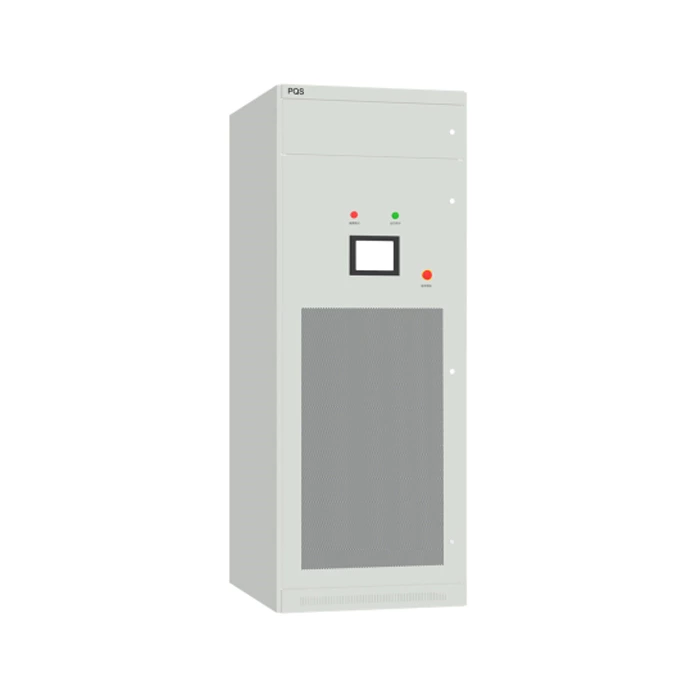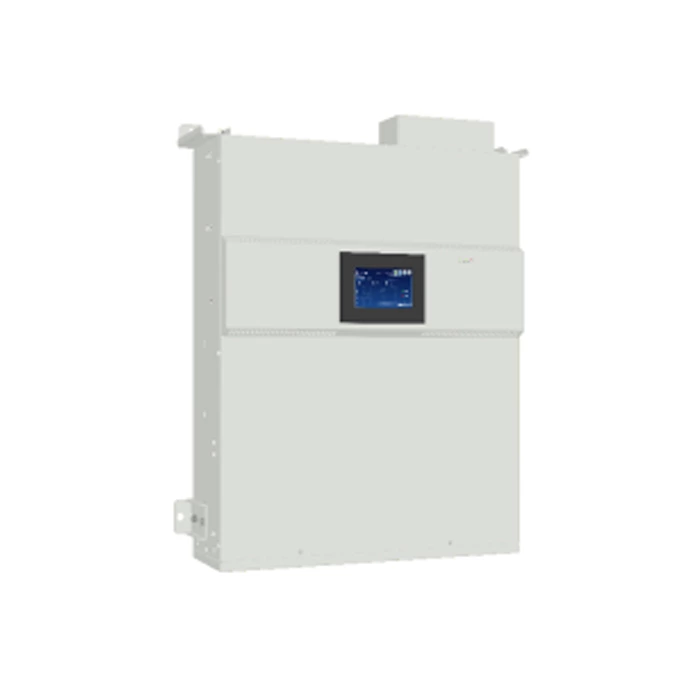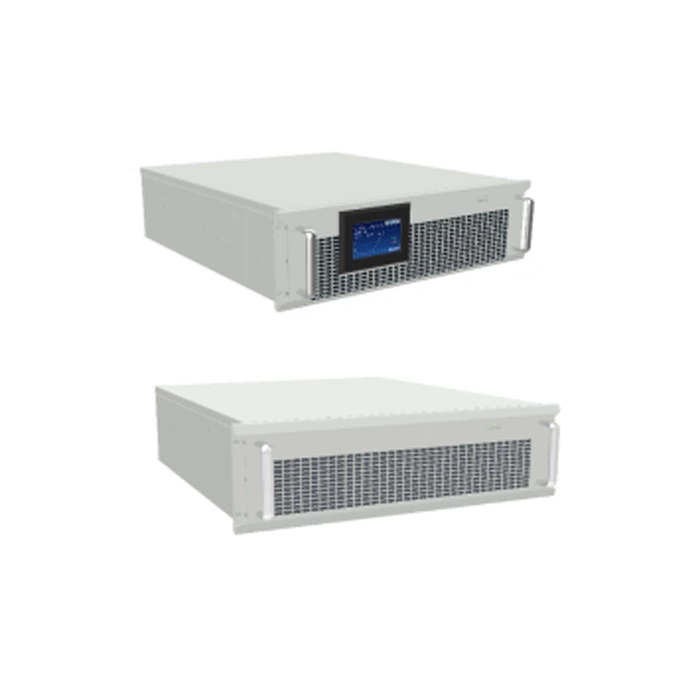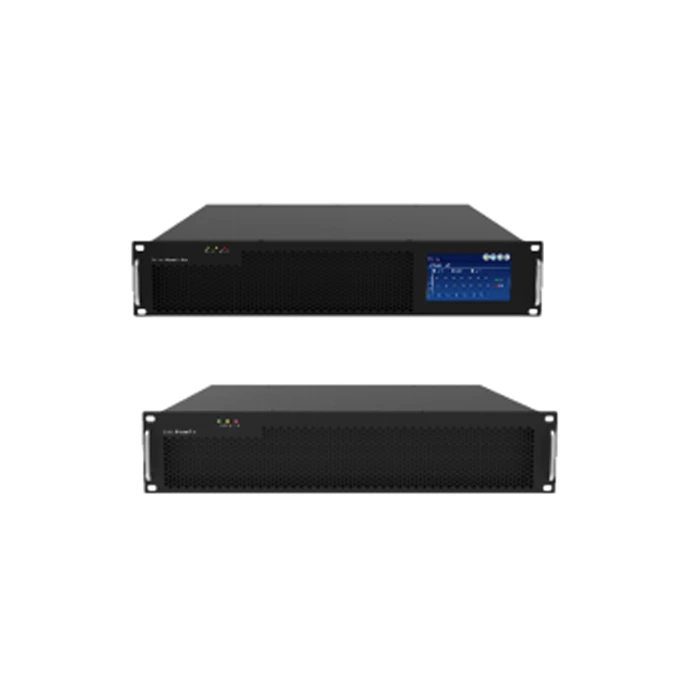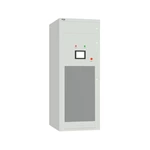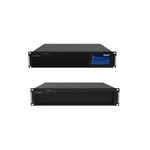About Power Quality
As the Internet of Things (IoT) and Intelligent Manufacturing (IM) develops, an increasing number of non-linear loads such as variable frequency drives (VFDs), servo VFDs, and high-frequency power devices are applied. This inevitably poses a negative impact on the power grid, such as transient shock, high-frequency harmonic current, reactive current and 3-phase voltage unbalance.
|
Power Quality Issues
|
Harm to Devices
|
Benefits after Management
|
|
Excessive reactive current
|
Reduced efficiency in power generation and transmission and a fine imposed by the Power Sector to related enterprises;
Sharp decline in the utilization of input transformers and unnecessary increase in device costs and basic electricity payments
|
Ensure that system power factors meet national standards, thereby avoiding fines arising from a low power factor;
Decrease in-house device power consumption, improve transformer utilization, and reduce electricity payments.
|
|
Excessive harmonic current
|
Voltage distortion generated on the power grid and inability to use related devices on the grid;
Shorter device service life, e.g., unexpected heating, accelerated aging and reduced service life of a capacitor, and more seriously, capacitor bulging, breakdown or explosion
|
Improve power use safety and system reliability;
Extend device service life and reduce device maintenance costs;
Minimize the disturbance of harmonic current on precision instruments.
|
|
3-phase voltage unbalance
|
Improper running of devices on the unbalanced line, and more seriously, device failure
|
Enhance power supply quality of enterprise equipment, improve reliability in device operation, and reduce economic loss;
Suppress neutral current and prevent overcurrent from damaging other lines.
|
|
Voltage sag
|
Unexpected shutdown of on-going manufacturing devices, product quality decline or production line hold-ups;
Machinery damage and electrical device burnout, and more seriously, personal accidents;
Sensitive-device data loss and huge economic loss
|
Ensure a continuous production line, and avoid possible productivity drop due to device shutdown;
Optimize device power use quality, and ensure product quality;
Extend service life of manufacturing equipment.
|
Applications

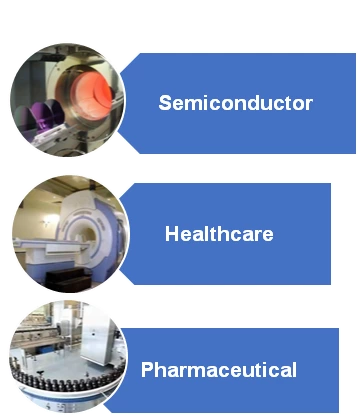

Introduction to Modular Power Quality Regulators
Our modular power quality products include: Static Var Generators (SVGs), Advanced SVGs (ASVGs) and Active Power Filters (APFs). They have features such as high power density, enhanced reliability, optimized performance, high utilization and unique designs. For use in different application scenarios, there are three way to install them: drawer style, wall-mounted style and upright style.
 Drawer style
Drawer style
|
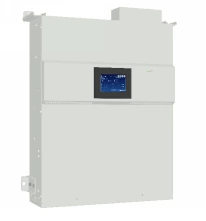 Wall-mounted
Wall-mounted
|
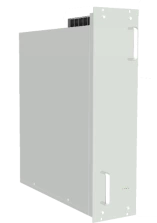 Upright
Upright
|
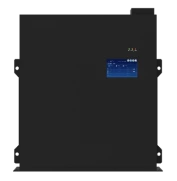 2-Units wall mounted
2-Units wall mounted
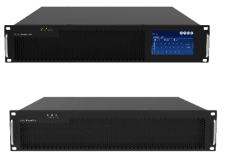 2-Units drawer style
2-Units drawer style
|
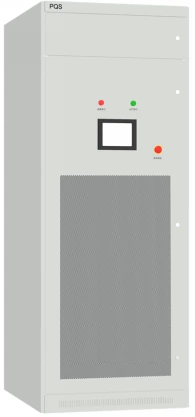 Integrated modular cabinet
Integrated modular cabinet
|
Main Features of Modular Power Quality Regulators
Our modular power quality regulators:
- Are compact, with a maximum size of only 0.05m³, have a high power density, and apply to a variety of scenarios. In practice, they are more applicable to places where limited space poses a stringent requirement on the ground they could cover, as well as power distribution upgrading projects.
- Employ the same design concepts as industry-grade products, and therefore, highly adaptable to the environment.
- Furnish the module control layer with a board compartment that reaches a dust-proof rating of IP6X and has withstood the nationally recognized third-party lab testing.
- Apply an interleaving control manner at the output end. This reduces at least 40% of global ripple current.
- Support a dynamic response at ms level, with a global response time less than 2ms. Therefore, they can accurately track how transient current changes in the power grid and prevent over-compensation and under-compensation.
- Employ an industry-leading redundant design based on Insulated Gate Bipolar Transistors (IGBTs). As a result, failure in one line will not affect the proper running of the system.
- Allow devices to detach from the power grid in case of a breakdown, with no port capacitors remain connected to the grid, thus preventing any negative impact on the harmonic oscillator and capacitive reactive power of the grid.
- Support a CT connecting at the power supply side or the load side, which you can adjust according to on-site requirements.
- Have a fast and thorough fault self-diagnosis function, which can be intelligently adjusted based on actual operating conditions and states.
- Make it easier to maintain by using separately removable parts such as bus capacitor and fan.
- Support a smart algorithm, which automatically adjusts the compensation proportion based on real-time changes in reactive current and harmonic current, and also supports flexibly setting a compensation goal, in order to optimize your business objective.
- Support smart sleep in which two parallel systems apply a polling mechanism to allocate an average worktime for each module under a light load condition, thus extending module lifetime.
- Have passed the CE certification and conform to EN 62477-1: 2012+A11-2014+A1-2017 standard;
- Each of our products has the following compensation feature:
- An APF supports a wider range of compensation, that is, instantaneous 2nd‒51st harmonic compensation;
- An ASVG supports 2nd‒23rd harmonic compensation. You can set harmonic compensation capacity and reactive compensation capacity globally.
- An SVG supports global, instantaneous compensation for inductive reactive power and capacitive reactive power, and meanwhile, solves the three phase unbalance problem.
Enhanced Reliability & Performance
Industry-first dust-proof module at the control layer: The control section is separated from the power section. The control layer applies a fully closed dust-proof design, with no vent holes at two sides, front and back, thus obtaining an excellent sealing; while at the air cooling layer, critical power units are cooled by the power layer, thus achieving a superior device cooling performance. In addition, the control layer reaches a protection class of IP6X and has withstood the third-party lab testing. This isolates the control section from being polluted by the outer world. Besides, we employ an industry-grade hardware design, which further improves security and reliability.

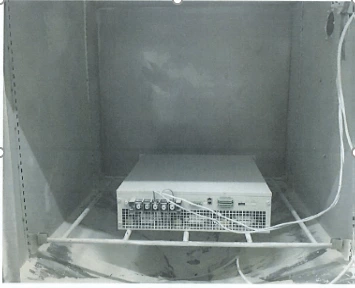 At the dust-proof certification test
At the dust-proof certification test
|
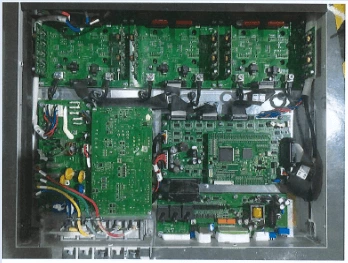 After the dust-proof certification test
After the dust-proof certification test
|
Use of a separate control scheme for each IGBT, which is much more reliable because: each IGBT is equipped with a set of drives and a hall element, and in the case that the IGBT on one side fails, the device still could offer 50% of the rated output capacity.
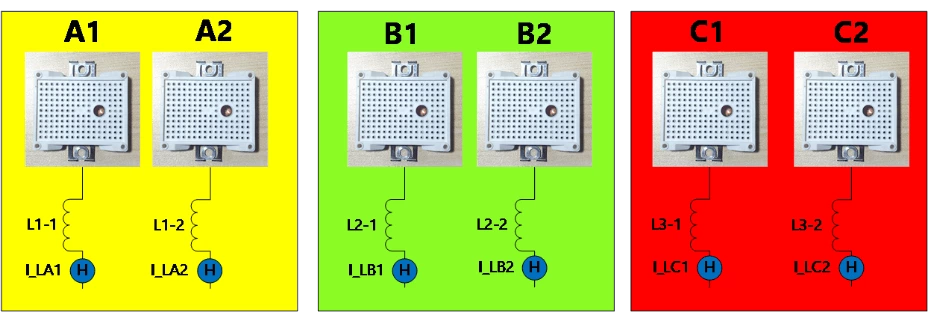
Providing a soft-start relay and resistor between a filter capacitor and the power grid, to ensure that when a device fails, the filter capacitor breaks away from the grid, without posing any secondary impact on the grid.

Quicker response: Use of a Second-Order Generalized Integration (SOGI) algorithm achieves a global response time of less than 2ms, making it possible to accurately tract how harmonic content and reactive content change in the power grid and prevent over-compensation and under-compensation.
In the response test of a sudden load rise, the oscillometer record shows that the global response time on the display is 1.36ms.
In the response test of a sudden load drop, the oscillometer record shows that the global response time on the display is 1.96ms.
|
Advanced harmonic suppression technology: Quickly suppresses the harmonic state in less than 1s after a device detects that harmonic current is inevitable in the power grid, making sure that the device will not be turned off entirely so that it can go on performing compensation for the system.
|
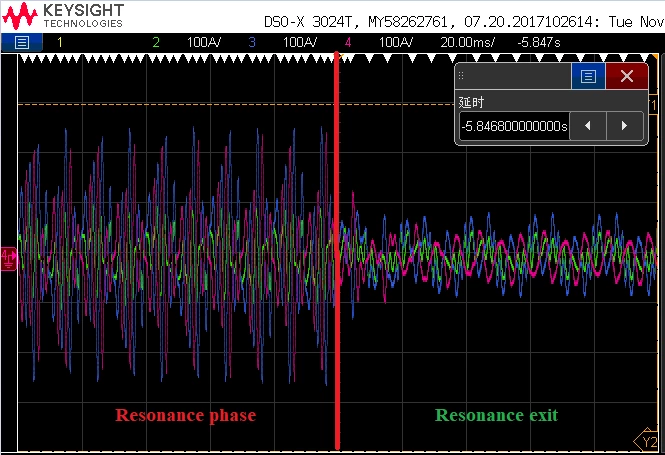 |
|
Low ripple output: An interleaving-based low-ripple control technology achieves a smooth waveform even for a 60th harmonic output.
|
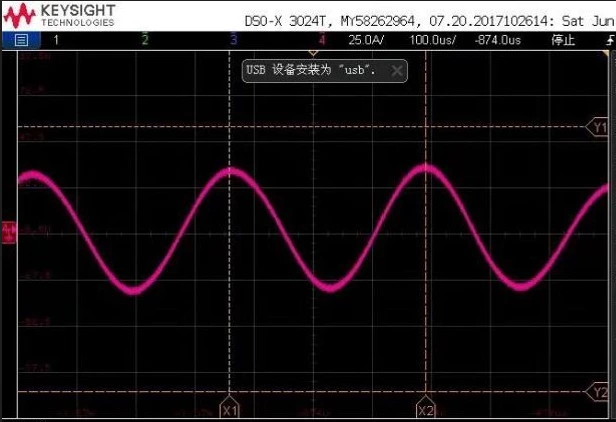 |
How Modular Power Quality Regulators (APF/ASVG/SVG) Work
Our modular power quality regulators are connected in parallel on the power grid. By using an external CT to detect in real-time the load current on the grid, with the help of DSP/FPGA/CPLD chips, and in cooperation with the latest harmonic/reactive-component extraction technology, our regulators quickly obtain the harmonic or reactive content in the load current upon analysis, then generate PWM pulses based on the value that has been set, drive the bi-directional converter made up of three-level IGBT modules, and generate a compensation current that meets the grid requirement. Finally, they realize dynamic, precise compensation for harmonic or reactive current and improve the quality in power supplying.
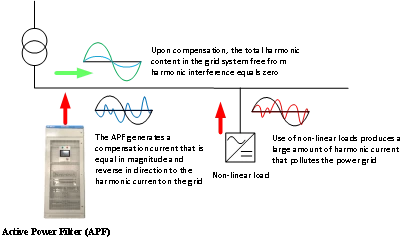
Harmonic current compensation by an APF
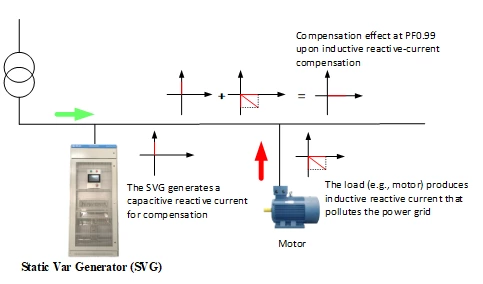 Inductive reactive-current compensation
Inductive reactive-current compensation
|
 Capacitive reactive-current compensation
Capacitive reactive-current compensation
|
Modular APF/ASVG/SVG Model

APF Model for Quick Selection
|
Transformer Capacity (kVA)
|
APF Capacity (3-Phase 3-Wire)
|
APF Capacity (3-Phase 4-Wire)
|
|
1000
|
200A
|
300A
|
|
1250
|
300A
|
400A
|
|
1600
|
400A
|
500A
|
|
Remarks
|
1. For use in harsh environment, we recommend industry-specific cabinet-style products;
2. For use in scenarios where harmonic current and reactive current are excessively large, configure our products based on actual calculation or in-site test data.
|
Modular APF Parameters
|
Model
|
APF 20A
|
APF 35A
|
APF 50A
|
APF 100A
|
APF 125A
|
APF 150A
|
|
System Parameters
|
|
Grid voltage
|
400V (-40%‒+20%)
|
|
Grid frequency
|
50 Hz/60Hz (±10%)
|
|
Pieces to be integrated
|
No limit
|
|
Global efficiency
|
Up to 98%
|
|
Wiring mode
|
3-phase 3-wire/3-phase 4-wire
|
|
Heat loss
|
<2%
|
|
CT
|
150/5‒10000/5
|
|
Connection mode
|
Back connection/Top connection
|
|
Air in/out
|
Front to back/Top to bottom
|
|
Performance Indicators
|
|
Response time
|
<2ms
|
|
Harmonic compensation order
|
2‒51
|
|
Cooling mode
|
Intelligent air cooling
|
|
Noise indicator
|
<58dB
|
|
Fixing mode
|
Drawer style, wall-mounted style and upright style
|
|
Dimensions
(W*D*H mm)
|
Drawer style: 442*485*90
Wall-mounted:442*90*485
|
Drawer style: 500*590*150
Wall-mounted:505*175*640
Upright: 170*525*590
|
Drawer style: 500*590*170
Wall-mounted: 505*195*640
Upright: 170*525*590
|
|
Net weight
|
20kg
|
35kg
|
45kg
|
|
Environment Parameters
|
|
Altitude
|
≤2000m, 2000m‒4000m de-rating
|
|
Operating temperature
|
-10℃‒+50℃ (>40℃, use upon de-rating)
|
|
Relative humidity
|
5%‒95%, non-condensing
|
ASVG/SVG Model for Quick Selection
|
Transformer Capacity
(kVA)
|
CosФ
|
|
|
<0.5
|
0.5‒0.6
|
0.6‒0.7
|
0.7‒0.8
|
0.8‒0.9
|
|
1000
|
550kvar
|
550kvar
|
450kvar
|
350kvar
|
200kvar
|
|
1250
|
600kvar
|
600kvar
|
550kvar
|
450kvar
|
235kvar
|
|
1600
|
800kvar
|
800kvar
|
700kvar
|
550kvar
|
300kvar
|
|
Remarks
|
1. For use in harsh environment, we recommend industry-specific cabinet-style products;
2. For use in scenarios where harmonic current and reactive current are excessively large, configure our products based on actual calculation or in-site test data.
|
Modular ASVG Parameters
|
Model
|
ASVG15kvar
|
ASVG25kvar
|
ASVG35kvar
|
ASVG50kvar
|
ASVG70kvar
|
ASVG100kvar
|
|
System Parameters
|
|
Grid voltage
|
400V (-40%‒+20%)
|
|
Grid frequency
|
50Hz/60Hz (±10%)
|
|
Pieces to be integrated
|
No limit
|
|
Efficiency
|
Up to 98%
|
|
Wiring mode
|
3-phase 3-wire/3-phase 4-wire
|
|
Heat loss
|
<2%
|
|
CT
|
150/5‒10000/5
|
|
Connection mode
|
Connect from the back/top
|
|
Air in/out
|
Front to back/Top to bottom
|
|
Performance Indicators
|
|
Global response time
|
<2ms
|
|
Harmonic compensation order
|
2‒23
|
|
Power factor
|
Adjustable from -1‒1
|
|
Cooling mode
|
Intelligent air cooling
|
|
Noise
|
<58dB
|
|
Fixing mode
|
Drawer style, wall-mounted style and upright style
|
|
Dimensions
(W*D*H mm)
|
Drawer style: 442*485*90
Wall-mounted: 442*90*485
|
Drawer style: 500*590*150
Wall-mounted: 505*175*640
Upright: 170*525*590
|
Drawer style: 500*590*170
Wall-mounted: 505*195*640
Upright: 170*525*590
|
|
Net weight
|
20kg
|
35kg
|
45kg
|
|
Environment Parameters
|
|
Altitude
|
≤2000m; 2000m‒4000m de-rating
|
|
Operating temperature
|
-10℃‒+50℃ (>40℃, use upon de-rating)
|
|
Relative humidity
|
5%‒95%, non-condensing
|
*Allocating rated power for compensation: You can select a proportion of the global rated power based on your settings to compensate for harmonic current and reactive current.
100% indicates that all of the global rated power is used for harmonics compensation.
Modular SVG Parameters
|
Model
|
SVG 15kvar
|
SVG 25kvar
|
SVG 35kvar
|
SVG 50kvar
|
SVG 70kvar
|
SVG100kvar
|
|
System Parameters
|
|
Grid voltage
|
400V (-40%‒+20%)
|
|
Grid frequency
|
50Hz/60Hz (±10%)
|
|
Pieces to be integrated
|
No limit
|
|
Efficiency
|
Up to 98%
|
|
Wiring mode
|
3-phase 3-wire/3-phase 4-wire
|
|
Heat loss
|
<2%
|
|
CT
|
150/5‒10000/5
|
|
Connection mode
|
Connect from the back/top
|
|
Air in/out
|
Front to back/Top to bottom
|
|
Performance Indicators
|
|
Global response time
|
<2ms
|
|
Power factor
|
Adjustable from -1‒1
|
|
Cooling mode
|
Intelligent air cooling
|
|
Noise
|
<58dB
|
|
Fixing mode
|
Drawer style, wall-mounted style and upright style
|
|
Dimension
(W*D*H mm)
|
Drawer style: 442*485*90
Wall-mounted: 442*90*485
|
Drawer style: 500*590*150
Wall-mounted: 505*175*640
Upright: 170*525*590
|
Drawer style: 500*590*170
Wall-mounted: 505*195*640
Upright: 170*525*590
|
|
Net weight
|
20kg
|
35kg
|
45kg
|
|
Environment Parameters
|
|
Altitude
|
≤2000m, 2000m‒4000m de-rating
|
|
Operating temperature
|
-10℃‒+50℃ (>40℃, use upon de-rating)
|
|
Relative humidity
|
5%‒95%, non-condensing
|
APF20A, 35A-LCD in Drawer-style Structure
ASVG/SVG15kvar, 25kvar-LCD in Drawer-style Structure
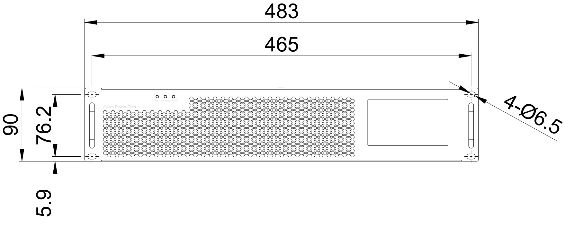 Front view
Front view
|
 Front view
Front view
|
 Left view
Left view
|
 Top view
Top view
|
APF20A, 35A-LED in Drawer-style Structure
ASVG/SVG15kvar, 25kvar-LED in Drawer-style Structure
 Front view
Front view
|
 Front view
Front view
|
 Left view
Left view
|
 Top view
Top view
|
APF50A, 100A-LCD in Drawer-style Structure
ASVG/SVG35kvar, 50kvar, 70kvar-LCD in Drawer-style Structure
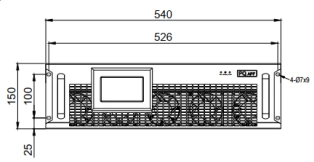 Front view
Front view
|
 Left view
Left view
|
 Back view
Back view
|
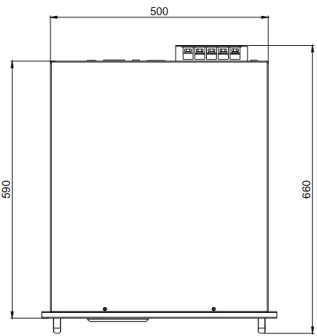 Top view
Top view
|
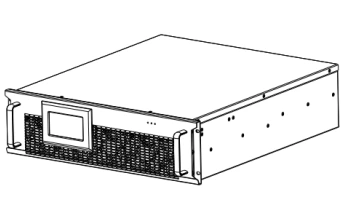 |
APF50A, 100A-LED in Drawer-style Structure
ASVG/SVG35kvar, 50kvar, 70kvar-LED in Drawer-style Structure
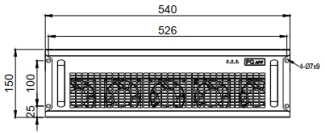 Front view
Front view
|
 Left view
Left view
|
 Back view
Back view
|
 Top view
Top view
|
 |
APF125A, 150A-LCD in Drawer-style Structure
ASVG/SVG100kvar-LCD in Drawer-style Structur
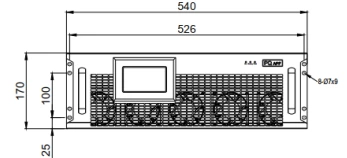 Front view
Front view
|
 Left view
Left view
|
 Back view
Back view
|
 Top view
Top view
|
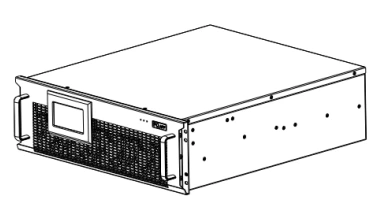 |
APF125A, 150A-LED in Drawer-style Structure
ASVG/SVG100kvar-LED in Drawer-style Structure
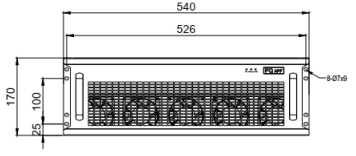 Front view
Front view
|
 Left view
Left view
|
 Back view
Back view
|
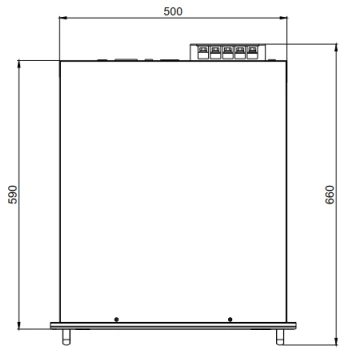 Top view
Top view
|
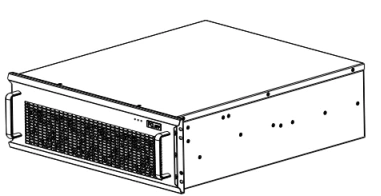 |
APF20A, 35A in Wall-mounted Structure
ASVG/SVG15kvar, 25kvar in Wall-mounted Structure
 Front view
Front view
|
 Left view
Left view
|
 Top view
Top view
|
APF50A, 100A in Wall-mounted Structure
ASVG/SVG35kvar, 50kvar, 70kvar in Wall-mounted Structure
 Front view
Front view
|
 Left view
Left view
|
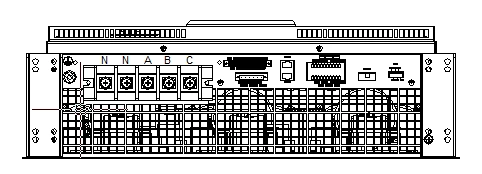 Top view
Top view
|
APF125A, 150A in Wall-mounted Structure
ASVG/SVG100kvar in Wall-mounted Structure
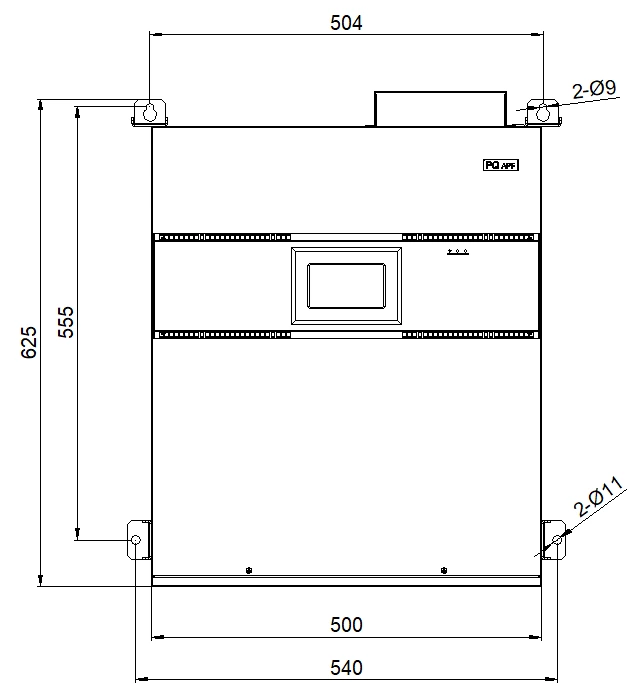 Front view
Front view
|
 Left view
Left view
|
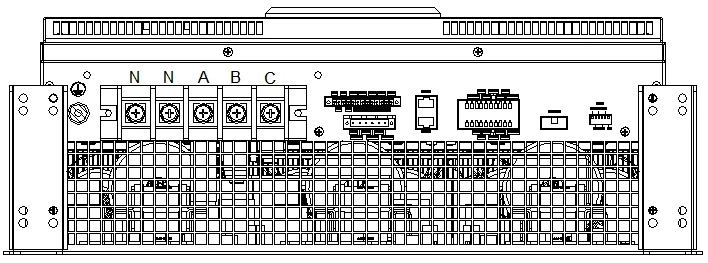 Top view
Top view
|
APF50A, 100A, 125A, 150A in Upright Structure
ASVG/SVG35kvar, 50kvar, 70kvar, 100kvar in Upright Structure
 Front view
Front view
|
 Left view
Left view
|
 Top view
Top view
|
Modular Structure of SVGs&APFs in Drawer-style Cabinet
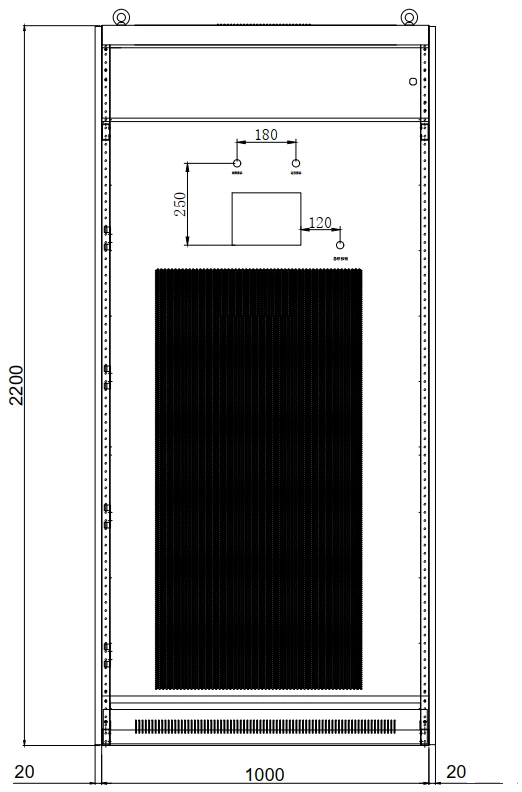 Front view
Front view
|
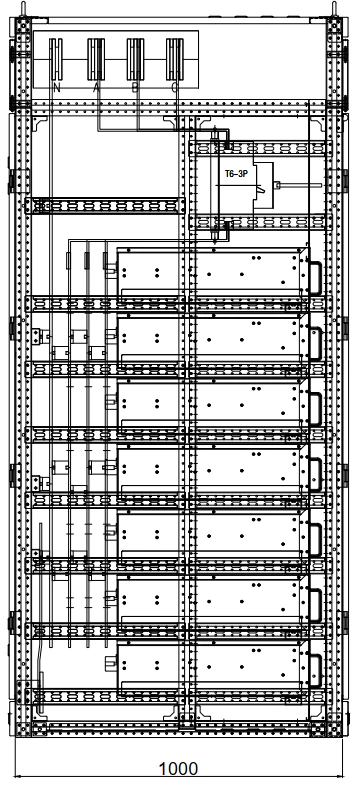 Side view
Side view
|
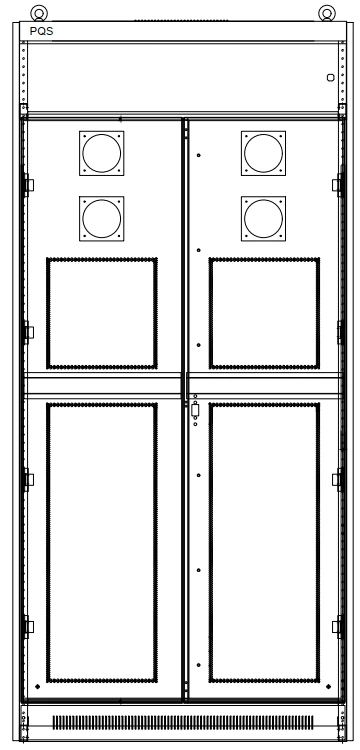 Back view
Back view
|
Modular Structure of SVGs&APFs in Upright Cabinet
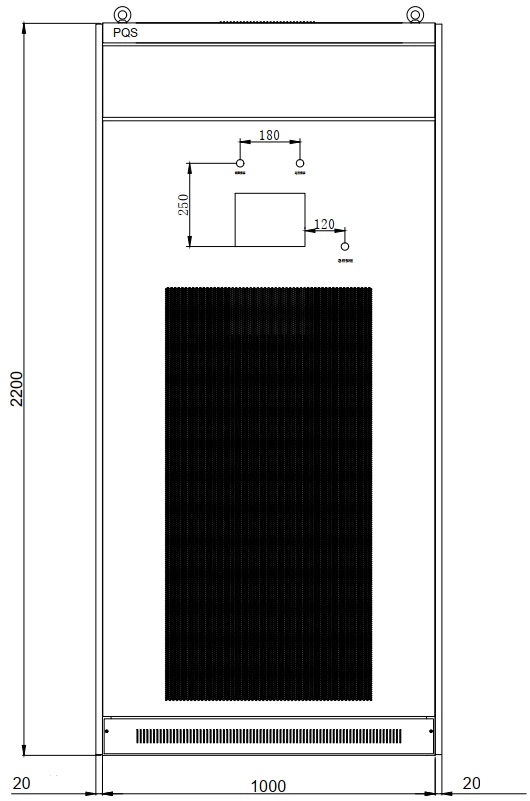 Front view
Front view
|
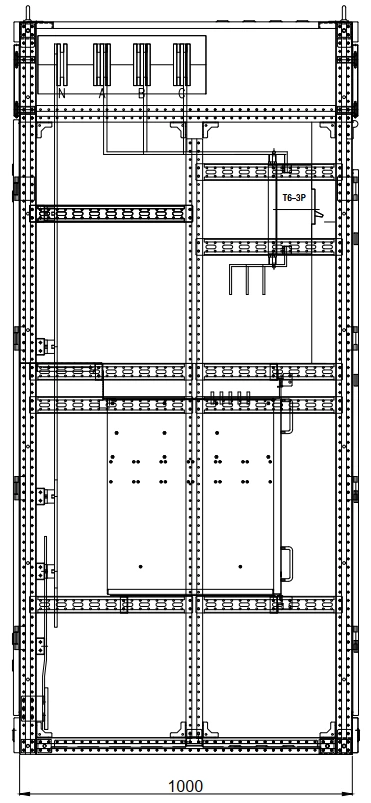 Side view
Side view
|
 Back view
Back view
|
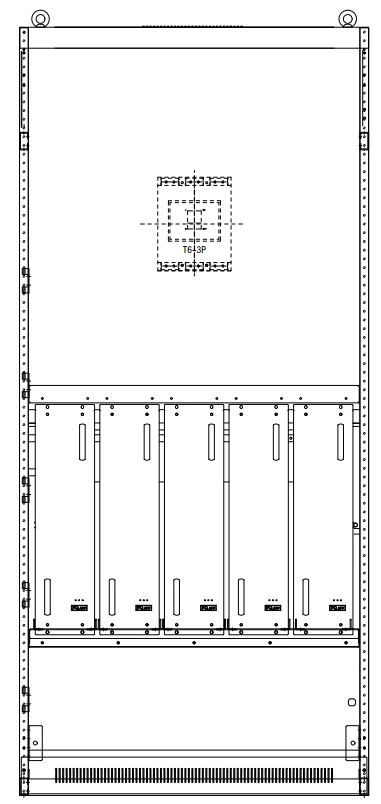 Module installation view
Module installation view
|
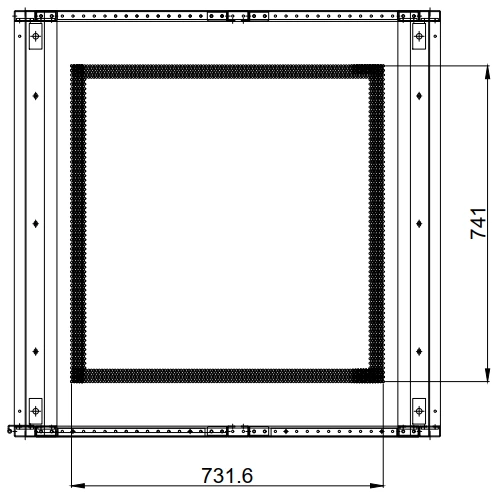 Top view
Top view
|



 Drawer style
Drawer style
 Wall-mounted
Wall-mounted
 Upright
Upright
 2-Units wall mounted
2-Units wall mounted
 2-Units drawer style
2-Units drawer style
 Integrated modular cabinet
Integrated modular cabinet

 At the dust-proof certification test
At the dust-proof certification test
 After the dust-proof certification test
After the dust-proof certification test



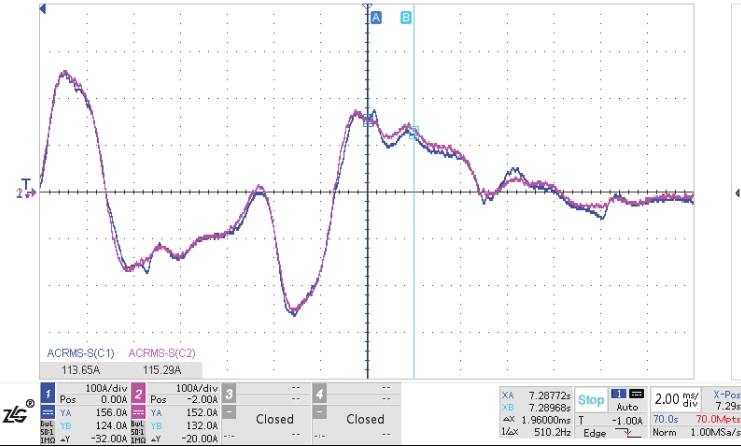



 Inductive reactive-current compensation
Inductive reactive-current compensation
 Capacitive reactive-current compensation
Capacitive reactive-current compensation

 Front view
Front view
 Front view
Front view
 Left view
Left view
 Top view
Top view
 Front view
Front view
 Front view
Front view
 Left view
Left view
 Top view
Top view
 Front view
Front view
 Left view
Left view
 Back view
Back view
 Top view
Top view

 Front view
Front view
 Left view
Left view
 Back view
Back view
 Top view
Top view

 Front view
Front view
 Left view
Left view
 Back view
Back view
 Top view
Top view

 Front view
Front view
 Left view
Left view
 Back view
Back view
 Top view
Top view

 Front view
Front view
 Left view
Left view
 Top view
Top view
 Front view
Front view
 Left view
Left view
 Top view
Top view
 Front view
Front view
 Left view
Left view
 Top view
Top view
 Front view
Front view
 Left view
Left view
 Top view
Top view
 Front view
Front view
 Side view
Side view
 Back view
Back view
 Front view
Front view
 Side view
Side view
 Back view
Back view
 Module installation view
Module installation view
 Top view
Top view
 Русский
Русский
 Français
Français
 Português
Português
 Español
Español
 اللغة العربية
اللغة العربية
